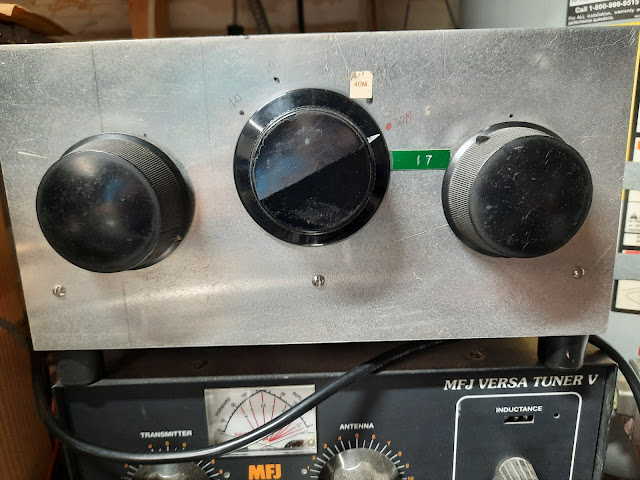We will now start a discourse about antenna tuners, a subject that rivals our current nationwide polarization over political candidates and political parties. In the end it will boil down to just a few thousand votes. So, to those few hams who will decide, I make my case for antenna tuners.
Firstly, why antenna tuners? Well to start with, our transmitters like to be matched to the load. You know that 50 Ohm thing. Matching theory says the maximum power will be transferred from the source to the load when there is a match. Along the way hidden in the bushes is harmonic suppression and reduction of possible damage to your final transistors caused by a mismatch.
In theory an antenna designed specifically to be at the operating frequency and presenting that magic 50 Ohm load can be directly connected to your transmitter and all is right with the world! Few antennas meet that criteria over a whole band of operation let alone multiple bands. That is where, as hams, we get greedy and want that single antenna to be matched over multiple bands and covering the whole band.
At N6QW I have that single antenna, and it is used over multiple bands but in between my rigs and that antenna is my homebrew AMU (Antenna Matching Unit).
My AMU has been used at legal limit power levels and runs cool as a cucumber. The form is a T Type tuner with a tapped inductor in the vertical part of the T and two series variable capacitors in the horizontal section.
The caps are good for 7.5 KV and are rated at greater than 100pF. Note the wide spacing between capacitor plates. On one of the caps is a switchable additional 100pF doorknob capacitor and is engaged on 75/80M. I use a heavy-duty banana plug and jack to manually switch in that capacitor. Note the isolated shaft couplers on the controls so there is a physical separation between the knobs and the actual hardware.
In the middle photo shows my homebrew unit sitting on top of a MFJ Versa Tuner V -- a total piece of junk and not as good as my homebrew unit as it will not match my single antenna to all bands. So, the homebrew stuff is better.
My single antenna is a 40-meter Delta Loop which at its apex is 35 feet high and fed at the top with 450 Ohm line about 45 feet long and connected to a 10kV 9:1 Balun (DX Engineering). To the balun is 100 feet of RG-8 coax (the good stuff) to the homebrew tuner.
Of note it is possible to add a balun right at the tuner so you could use open wire feeder from the AMU to the antenna.
Now to the conflict and conflagration. Some readers will argue SWR doesn't matter and there is no need to match the antenna to the load. Keep telling yourself that as you send away your ICOM IC7300 to have the finals replaced.
It took a bit of time to find the hardware but at a total cost of about $300 is far less expensive than that MFJ (Mighty Fine Junk) unit. I should mention my #3 son did some machining work for a ham in the SF Bay Area and he took the MFJ tuner as payment -- so a gift to me.
This is where TYGNYBNT is spot on!
73's
Pete N6QW



